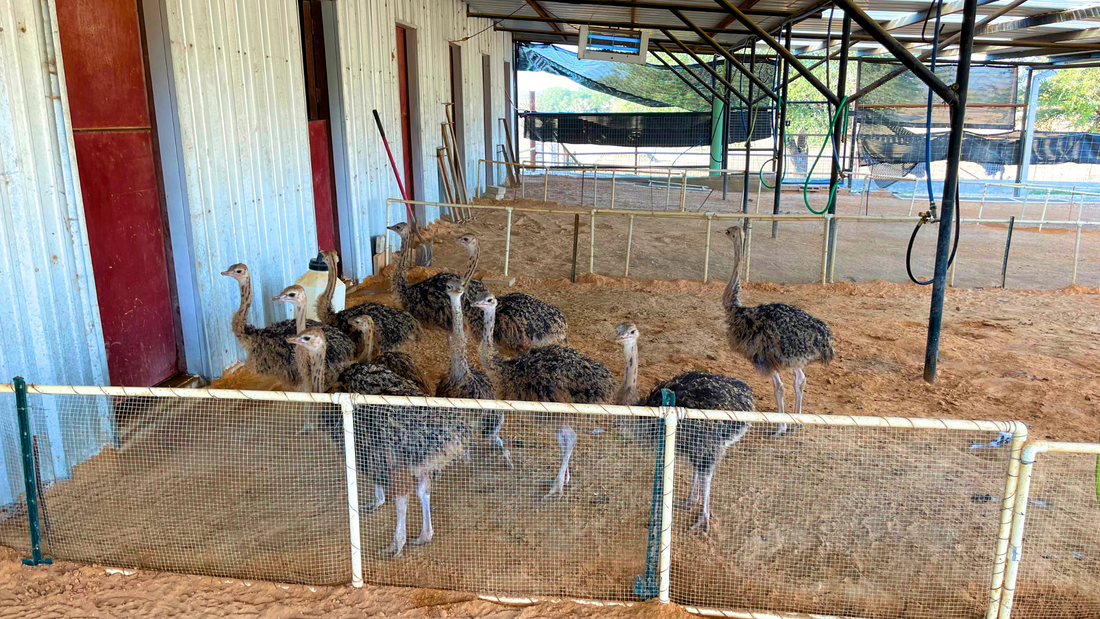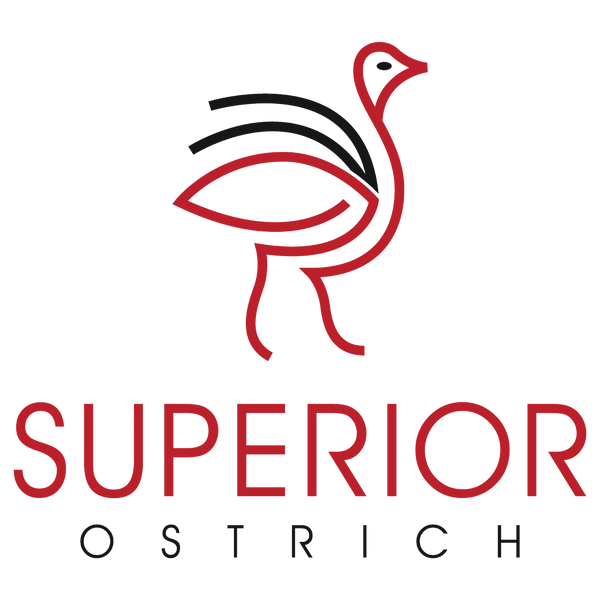
Ostrich Farming 101: A Quick Guide to Starting an Ostrich Farm
Share
Successful ostrich farming requires a combination of proper management practices, adequate facilities, and attention to the birds' specific needs. Here is a list of some key ostrich farming techniques that contribute to a successful operation.
1. Create Flock Management Systems
Regular Monitoring
Keep a close eye on the health, behavior, and performance of the ostrich flock. Detect and address any signs of illness or distress promptly.
Record-keeping
Maintain detailed records of each bird's weight, growth rate, egg production, and any medical treatments. This data aids in identifying trends and making informed management decisions.
2. Establish Nutrition and Feeding Protocols
Balanced Diet
Consider our contract farming program (contact us today to find out more) or consult with a poultry nutritionist to develop a balanced diet that meets the specific nutritional needs of ostriches at different life stages.
Variety
Consider offering a variety of feed ingredients, including grains, protein sources, vitamins, and minerals, to ensure optimal health and growth.
3. Develop Habitat and Housing
Spacious Enclosures
Ostriches need ample space to roam and express their natural behaviors. We suggest providing large, well-fenced enclosures to prevent stress and aggressive behaviors.
Shelter
Offer suitable shelter to protect the birds from extreme weather conditions and predators. Adequate ventilation is crucial to prevent respiratory issues.
4. Generate A Breeding Program
Genetic Diversity
Plan breeding strategies to avoid close inbreeding and maintain a diverse genetic pool.
Selection Criteria
Select breeding birds based on desirable traits, such as growth rate, egg production, and health. Cull birds that don't meet the desired criteria.
5. Understand Incubation and Hatching
Proper Incubator Setup
It is imperative to maintain stable temperature, humidity, and ventilation in the incubator to ensure successful hatching.
Candling
Regularly candle eggs to check for fertility and monitor embryo development. After day 14 in the incubator is when you can begin to see an embryo forming.
6. Consider Healthcare and Veterinary Support
Vaccinations
Determine if you choose to vaccinate the animals, and if so at what age. Consult with your qualified veterinarian to establish an applicable vaccination schedule to protect against common diseases. At Superior Ostrich, we have chosen to stay away from vaccinations with our birds.
Regular Check-ups
Schedule routine health checks to detect and treat health issues early.
7. Think About Socialization and Handling
Gentle Handling
We suggest getting your ostrich chicks accustomed to human presence from an early age to minimize stress and facilitate easier handling as adults.
8. Discover Parasite Control
Regular Inspections
Regularly inspect birds for signs of external parasites like mites and ticks.
Deworming
Develop a worm prevention or deworming program to control internal parasites that could affect the birds' health.
9. Establish Egg Collection and Management Methods
Daily Collection
Eggs should be collected daily to prevent breakage and contamination.
Egg Storage
Store eggs properly at a suitable temperature and humidity to maintain their viability.
10. Consider Environmental Factors
Sustainability
Adopt environmentally friendly practices to reduce the farm's ecological footprint.
Waste Management
Implement proper waste management techniques to minimize environmental impact.
11. Undergo Education and Training
Continuous Learning
Stay informed about advancements in ostrich farming through workshops, seminars, and educational resources.
Staff Training
Ensure that farm staff is well-trained in ostrich care and management practices.
12. Familiarize with Compliance and Regulations
Legal Requirements
Familiarize yourself with local and national regulations governing ostrich farming, including zoning, permits, and animal welfare standards.
Licensing
Ensure the farm complies with all necessary permits and licenses.
By diligently applying these ostrich farming techniques, we hope to help curious farmers understand how to ensure the health, welfare, and productivity of ostriches on their farm, while building a successful and sustainable business.
